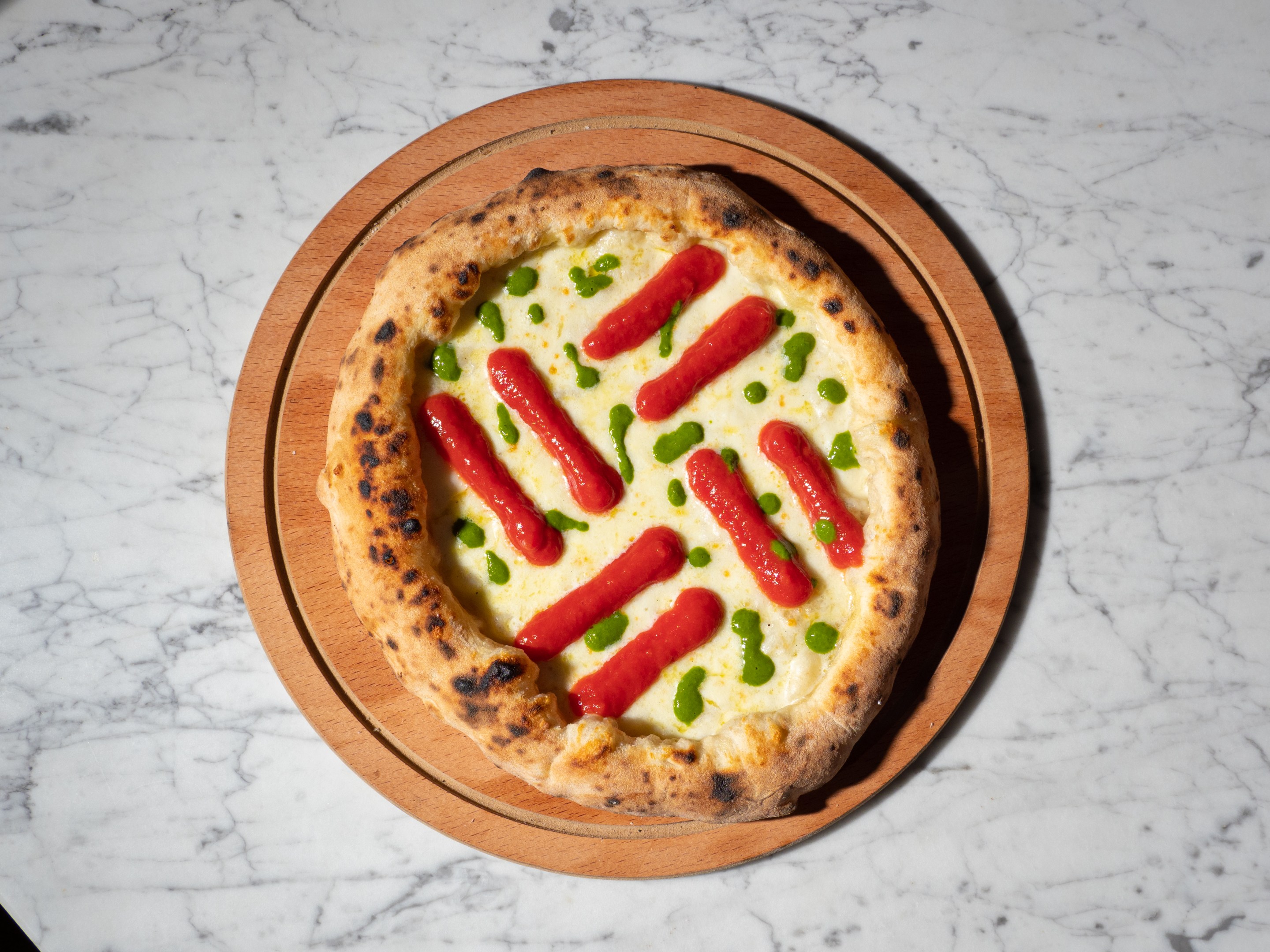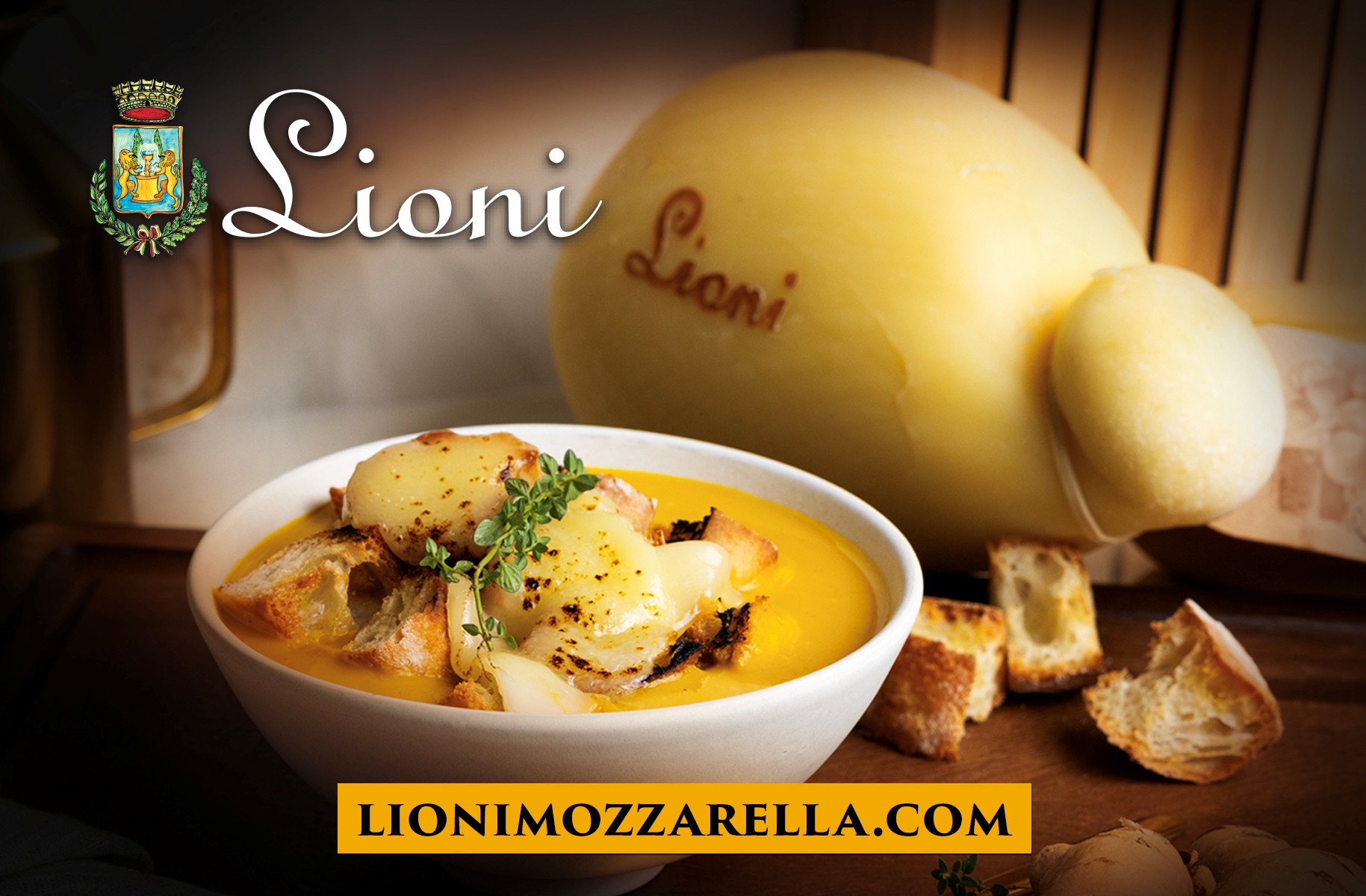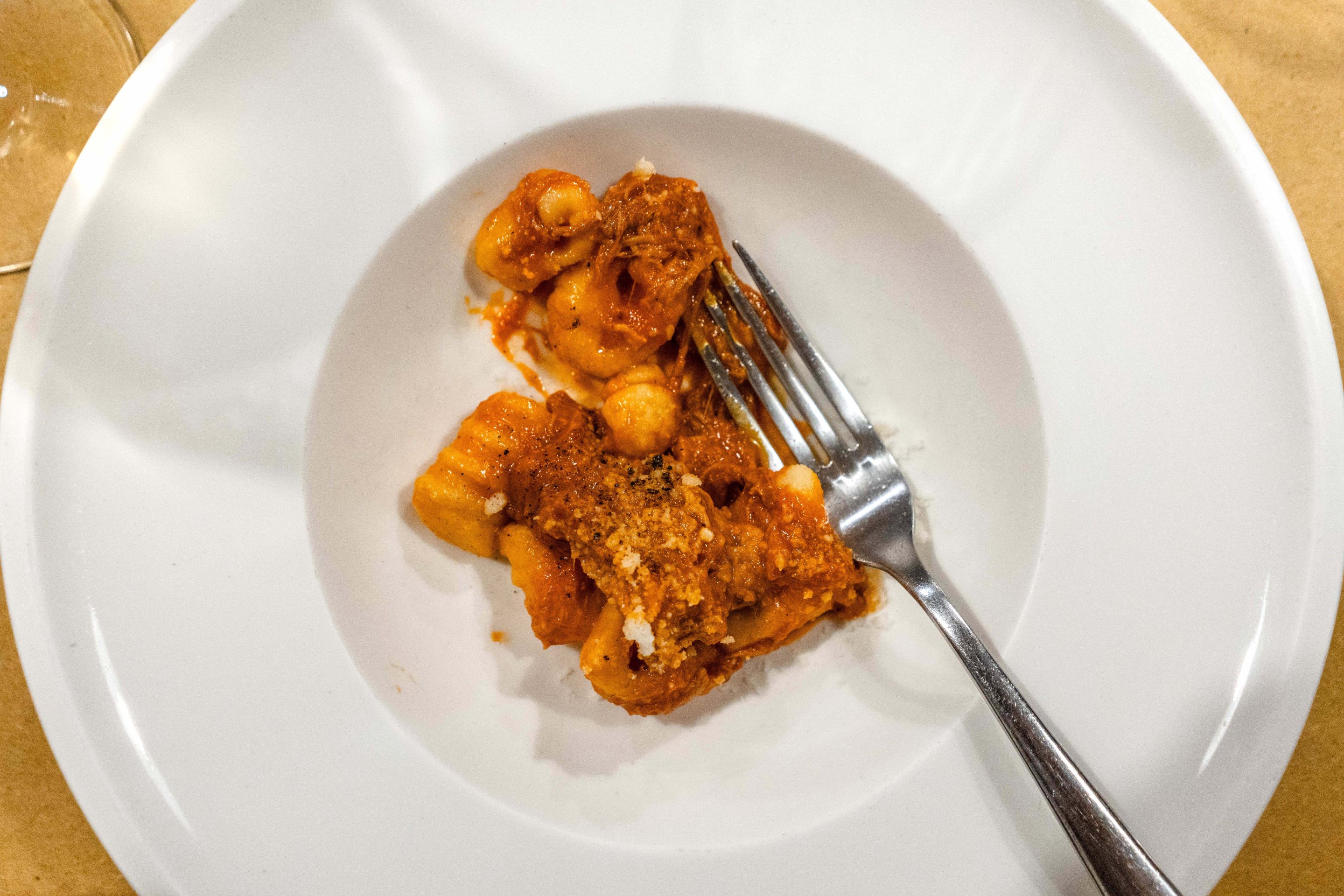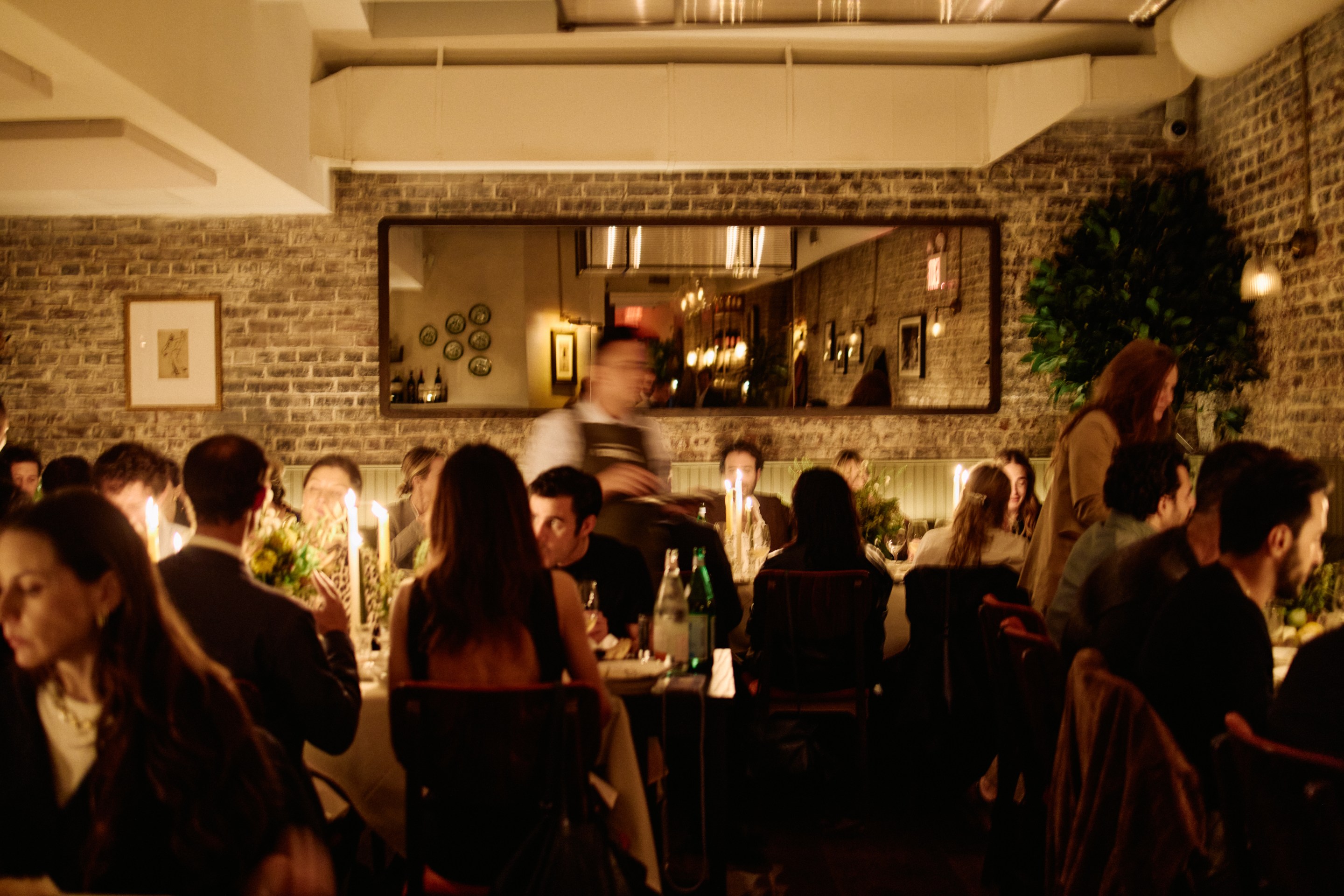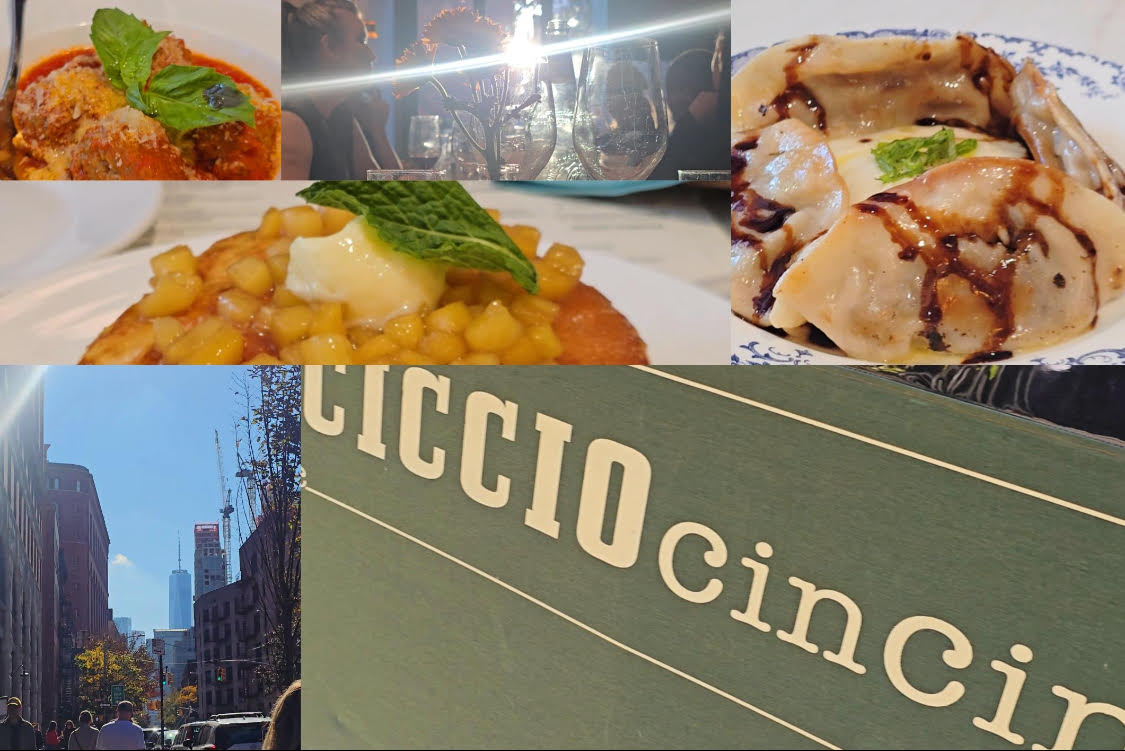Franco Pepe doesn’t like to leave his world-renowned pizza restaurant, Pepe in Grani, very often. There, in the small village of Caiazzo, about 30 miles north of Naples, he and his team make at least 800 pizzas a night for upwards of 400 guests, in addition to appetizers and desserts all created with the same in-house dough.
It’s rare to spot Pepe away from the place that has become his refuge, laboratory, and business, but last week, Pepe appeared in Jersey City, NJ, to make his pizzas for a one-night-only dinner alongside another pizza chef-philosopher, Dan Richer, at Richer’s Razza Pizza Artigianale, a once-secret spot that now is one of the few restaurants in the New York City area to have earned a 3-star review from The New York Times.
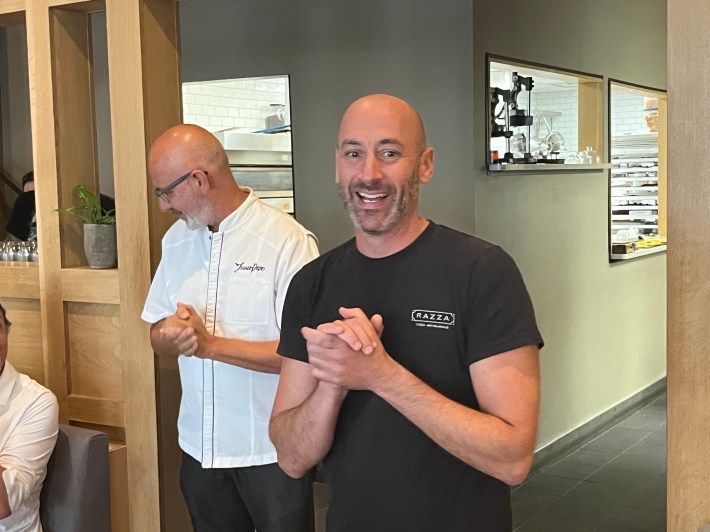
The morning after the sold-out dinner, Pepe and Richer sat down with Appetito for an exclusive chat about pizza and its purpose. They’d come together in part at the suggestion of Brian McGinn, the co-creator of Netflix’s Chef’s Table series, which devoted an entire episode to Pepe in its six-part pizza special last year. The episode focuses on Pepe’s break from his two brothers, who had left other professions to continue running their family pizza restaurant after their father’s passing, when Franco Pepe decided to make a more artisanal, innovative style of pizza, such as his famed Margherita Sbagliata (or mistake Margherita), which is cooked only with mozzarella and olive oil before adding stripes of tomato and basil puree to finish the pie.
After our chat, Pepe and his crew would serve one last meal to invited media and guests, then pack up and head back to Caiazzo, ending a quick three-day trip and returning to his beloved ovens at Pepe in Grani.
In our interview, Pepe, speaking in Italian (with translation from his colleague Kevin Russo), and Richer, agreed on everything about pizza, earnestly talking about why pizza is important, how it can be made healthier, and sharing techniques and approaches that elevate the dish to the echelons of steak or seafood.
At one point, during a discussion about the temperatures used to cook their respective pizzas, Richer spoke about the different levels of heat happening within the same oven and the importance of moving the pizza around, while Pepe, speaking to his translator, was apparently ruminating on the same topic. When his translator revealed what Pepe had been saying, Richer laughed.
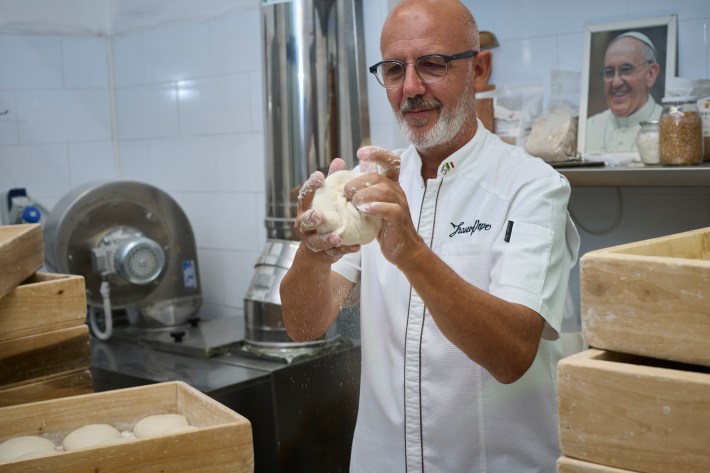
“Same mind. He had no idea what I said and he was saying the same thing! That's how the past two days have been, working side by side. Our minds are very, very similar.”
This interview is condensed and edited for clarity and continuity.
Why was it important for you to come here to cook in New Jersey?
Pepe: To be invited here in the United States, there is a bit of pressure. Because it means a lot to me. After 10 years of Pepe in Grani, it’s like a challenge to come here, [but it’s important] to let people know about our project in Pepe in Grani.
When you come to the United States, the ingredients are different from what you can find in Italy. How does that affect your ability to make the pizza you want to make?
Pepe: All the dough and ingredients came from Italy. We traveled with them for 27 hours [due in part to a rerouted flight that diverted to Boston due to an emergency]. We have a blend of flour that is made especially for us. We change the mix out every four months to balance the taste. That's the reason we bring our dough every time we travel to cook anywhere.
Richer: We did something really interesting last night. Franco made pizza on my dough and I made one on his dough, and seeing the way that his hand movements affected my dough and the pressure that he exerted on my dough, it came out looking like one of his pizzas. And when I made it on his dough, I used my hands, and the way I made it, it looked like my pizza. It was so interesting.
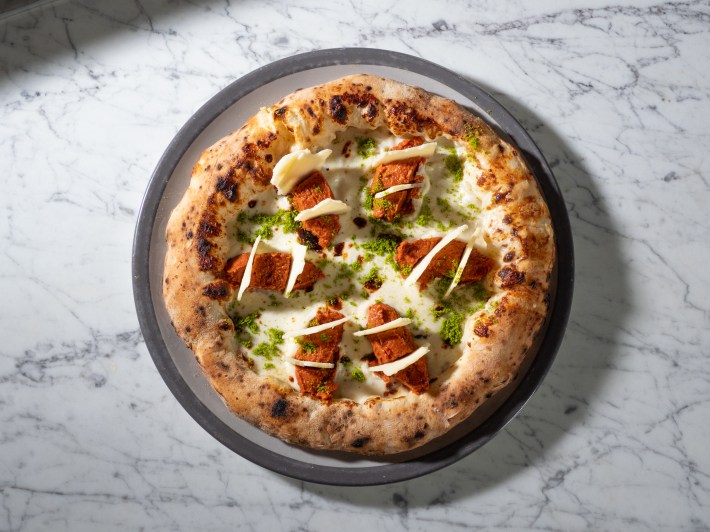
Pepe: A lot of Neapolitan pizzaioli come to the U.S. and make Neapolitan pizzas. I want to come meet people who study the dough and make pizza in different ways. I went to Los Angeles, for instance, to see how Nancy Silverton makes pizza. Once, I think it was in 2017, the press came to see me. Jonathan Gold was there, and he had been to Pepe in Grani before, so they asked him how to describe my pizza. Jonathan was a man of few words, and he simply replied, “Tastes like Caiazzo.”
[Pepe scrolls through his phone at this point to show a photo of the late critic Gold standing alongside his son.]
Pepe: I am the only well-known pizza maker in Italy who hasn’t opened a restaurant in a big city. We just have the one in Caiazzo. It’s a town of just 5,000 people. For me the goal of traveling is to bring a taste of Caiazzo.
[Pepe now mentions Sarah Minnick of Lovely’s Fifty Fifty in Portland, OR, who was also featured in the Chef’s Table: Pizza series, and talks about finding like-minded chefs who are focused on pizza and ingredients.]
Pepe: When Sarah came to Caiazzo, we made a trade of seeds for onions. A few years later, we did an event in Italy with my onions grown in Oregon, and Sarah’s onions grown in Caiazzo.
Richer: I love it!
Pepe: I also did an event in Mexico, in the Yucatan, and was only using ingredients from the Yucatan. It was really emotional for me, and a big challenge.
Richer: I just did the same thing in Spain. My goal was to create a Madrid Margherita with all products from that area. It’s difficult, because what Franco and I do so much is nurturing the relationships we have with producers or specific products. Franco knows the tomato grower. His cheese guy, Mimo… Having that relationship is so incredibly important. If something’s not right with the product, you can give them feedback. You can change technique due to natural variations. Without that relationship, you’re out in the world trying to find the perfect cheese, and it’s very challenging.
With your Madrid Margherita, are you grading on a curve, so to speak? Is it up to your standards?
Richer: Pizza making is all about repetition. So at the end of it, I felt like I needed another month. And I'm sure if I had a month I would say it would be better if we had another year. And that's the thing about pizza: There is so much repetition, and every time you make a pizza, it can be better than the last one.
Pepe: I agree with Dan. I am collaborating with a new tomato purveyor who I met with on Sunday before traveling here—
Richer: The tomatoes are amazing! Franco spoon-fed me yesterday and it was fantastic!
I was reading about Pepe in Grani, and how you now have a lot of people working there, not only making pizza and serving it, but also studying the ingredients and how you use them. And in the Chef’s Table episode, you showcase how you make all of your dough by hand, mixing it and fermenting it. Can you talk about your process at Pepe in Grani?
Pepe: I started this project with seven guys. I told them, I don’t know how much I can pay you at the end of the month. It’s a small village, and I wasn’t sure that people would come from far away. Today, we have 48 employees. We make all the dough and use it in everything from the fried pizza starters to the pizzas and then the dessert, which also involves fried pizza.
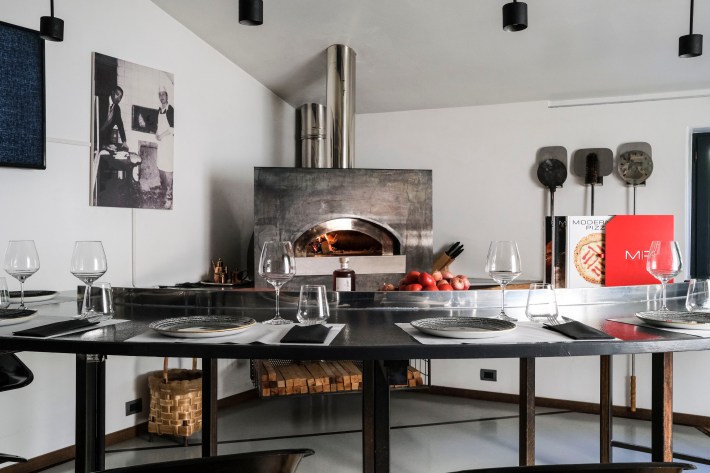
Is there anything new and noteworthy going on at Pepe in Grani?
Pepe: We have a pizzeria in our building on the top floor. We have two rooms where people can sleep, and we also have the “smallest pizzeria in all the world.” It’s just for eight people. I create the pizza in front of them and have direct contact with the guests.
You both have such high standards for pizza. How does it feel when you go to a place and it's just a thrown-together pizza?
Richer: I mean, that's like asking a musician what do you think about another band. You like some, you don’t like others. It’s also very situational. If I’m out with my kids I don’t really care.
You’re never offended?
Richer: No, I’m never offended.
Let’s talk about your philosophies about pizza, and why you feel it can be elevated.
Pepe: Pizza was also always thought of as a fast food. Today, the pizza maker has a very important job, because you have to give people food that is better, and it is our responsibility. And that's the reason we have biologists on our team, and we study the product that we give to the people, to give them not just good-tasting food but also healthier food.
Dan, I was listening to a podcast where you talked about regularly testing different tomato products, and you devote a lot of time to sourcing quality ingredients. Why?
Richer: I mean, at the most fundamental level, pizza is about happiness. Right? My goal as a chef is to make people happy. And the better our product is, the more delicious it is. So the harder I try the happier people are. I'm also an intensely curious person. Pizza is my platform for discovering the world. I have to study thermodynamics in order to understand. I have to understand biology. I’m jealous of Franco’s biologists. I have to study chemistry in order to understand fermentation; I have to understand agriculture to understand tomatoes. I have to study all of these and many more disciplines in order to maximize the happiness.
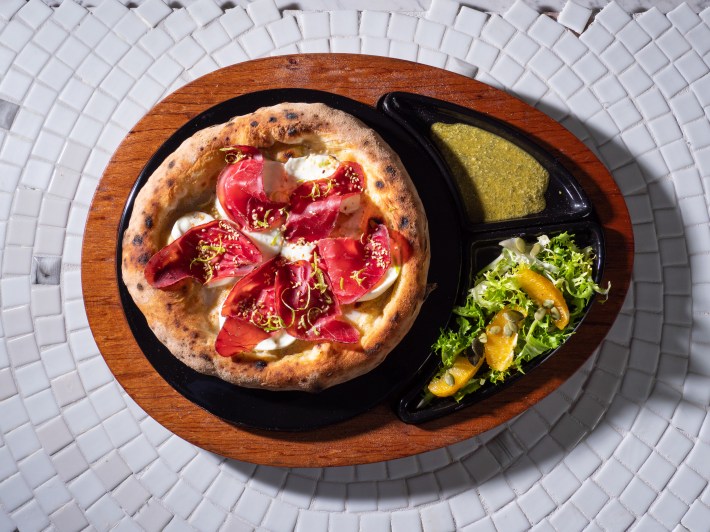
Franco is also talking about ways that pizza can be part of a healthy diet. There’s even a “Mediterranean” section on your menu at Pepe in Grani, right?
Pepe: Yes. All of our guests can take a pizza from the main menu or a small pizza from the healthy menu. All the pizzas are smaller on the Mediterranean menu. An Italian foundation analyzed the menu and gave their certification to seven of the 12 as helping to combat cancer. We have worked with our staff to study lipids, protein, carbohydrates, and fiber. For instance, we found that the crust accounts for 60% of the carbohydrates in pizza, so we blend olive oil, vinegar, and seeds into a dressing that we serve with the small pizzas as a sort of equalizer. This menu has led to me becoming a Mediterranean Diet ambassador. It’s my goal to have a menu like this because pizza has to be a healthy food. Not just junk food.
